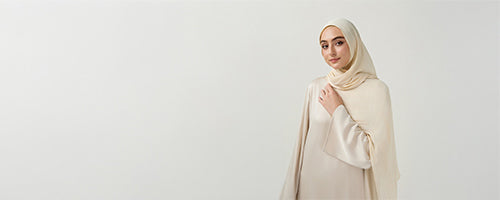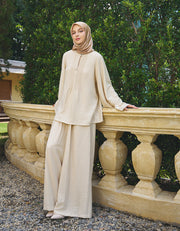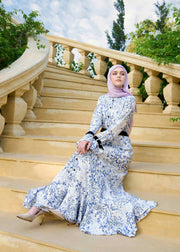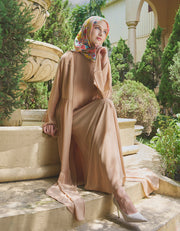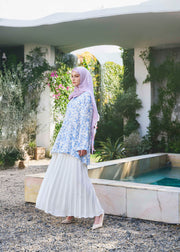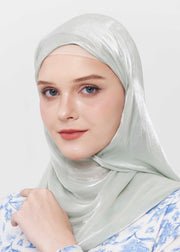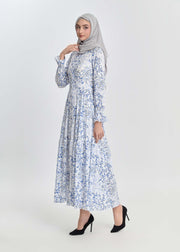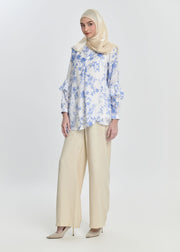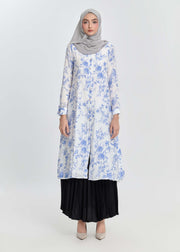Green vs Black: Dominant Colors in Islamic Fashion Explained
Colors have always played a powerful role in the world of Islamic fashion, symbolizing faith, modesty, and identity. Among all shades, green and black stand out as the most dominant and meaningful. These two colors represent not only beauty and elegance but also deep spiritual and cultural connections within the Islamic world.
This article explores why green and black have become defining colors in Islamic clothing, their symbolism, and how modern designers continue to reinterpret them today.
The Meaning of Green in Islamic Fashion
Green holds a sacred place in Islamic history and culture. It is often associated with paradise, peace, and life. The Qur’an frequently mentions lush gardens and greenery as symbols of divine grace, which makes green a color of hope and eternal serenity.
In Islamic fashion, green represents balance — a color that embodies both spirituality and vitality. From emerald and olive to sage and mint, green tones appear in various forms across modest fashion, including abayas, hijabs, and kaftans.
Green also signifies prosperity and renewal, making it a popular choice for festive occasions and religious celebrations. Many Muslim women choose green outfits for Eid or Nikah ceremonies as it reflects joy and spiritual connection.

The Meaning of Green in Islamic Fashion
The Meaning of Black in Islamic Fashion
If green symbolizes peace and paradise, black stands for dignity, power, and modesty. It is the most versatile and timeless shade in Islamic fashion, widely embraced for its elegance and simplicity.
The black abaya has become a global symbol of modest wear — elegant, respectful, and endlessly adaptable. In many cultures, black also signifies humility and seriousness, aligning perfectly with Islamic values of modesty (haya).
Beyond tradition, modern fashion houses have elevated black into a symbol of sophistication. Matte black jilbabs, satin abayas, and chiffon hijabs are now essentials for women seeking modest elegance without sacrificing style.
Black’s universal appeal allows it to transcend cultures — equally fitting for prayer, work, or social gatherings. It’s no wonder that black remains one of the most powerful colors in Islamic fashion.

The Meaning of Black in Islamic Fashion
Green vs Black: A Symbolic Contrast
The contrast between green and black in Islamic fashion highlights two sides of spiritual expression.
-
Green conveys vitality, harmony, and divine connection.
-
Black communicates strength, discipline, and elegance.
Together, they represent the balance of light and depth — the vibrancy of faith against the serenity of modesty. It’s not unusual to see both colors paired together: a green hijab over a black abaya, or vice versa, creating a meaningful and visually striking outfit.
This harmony reflects an important principle in Islamic clothing — balance between faith and fashion, visibility and modesty.

Green vs Black: A Symbolic Contrast
Modern Interpretations of Colors in Islamic Fashion
Contemporary Muslim designers have reimagined traditional color meanings through creative design. Colors in Islamic fashion today go beyond symbolism; they embody empowerment and individuality.
For instance:
-
Black abayas are now offered with embroidered gold or silver accents for a modern touch.
-
Green dresses appear in minimalist cuts with lightweight fabrics, suitable for both casual and formal settings.
-
Designers mix green and black with neutral tones — beige, cream, and soft white — to create layered, modest outfits with visual depth.
On global runways and modest fashion platforms, these shades continue to dominate, representing not only tradition but also modern identity.
How to Style Green and Black in Modest Outfits
Here are a few simple ways to integrate these dominant colors in Islamic fashion into your wardrobe:
-
Everyday Look: Pair a dark green tunic with a black hijab for effortless elegance.
-
Formal Events: A satin black abaya with emerald embroidery radiates luxury without being overly bold.
-
Casual Outfits: Combine an olive maxi skirt with a white blouse and soft green scarf for a balanced look.
-
Layering Tip: Mix green accessories — like handbags or belts — with an all-black outfit to add a subtle pop of color.
Both colors are incredibly versatile and flattering for most skin tones, making them essential for any modest wardrobe.

How to Style Green and Black in Modest Outfits
The Spiritual Harmony of Green and Black
In Islamic tradition, color choices often reflect one’s emotional state and spiritual values. Green connects the believer to life and paradise, while black symbolizes humility before Allah. Together, they express a deep harmony — a reminder that modesty is both internal and external.
This connection between spirituality and fashion is what makes Islamic clothing more than just attire — it’s a form of worship, identity, and personal expression.
Conclusion: Celebrating the Beauty of Colors in Islamic Fashion
Both green and black continue to shape the landscape of Islamic fashion — one representing divine vitality, the other timeless grace. These shades endure not because of trends, but because of their powerful symbolism and versatility.
Whether you prefer the serenity of green or the sophistication of black, embracing these colors in Islamic fashion allows you to celebrate your faith through elegance and meaning.
For those who wish to explore modest pieces inspired by these iconic shades, visit Minnaba — where every collection blends color, culture, and faith into timeless beauty.

